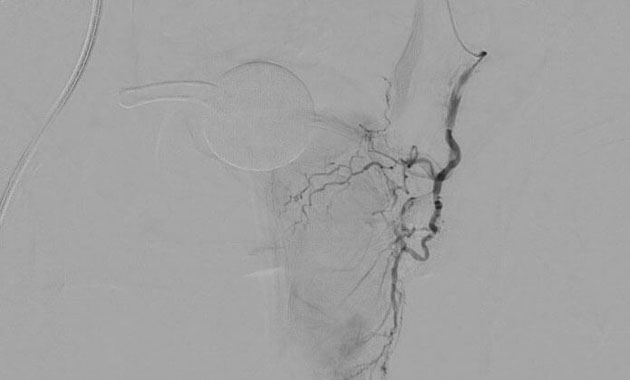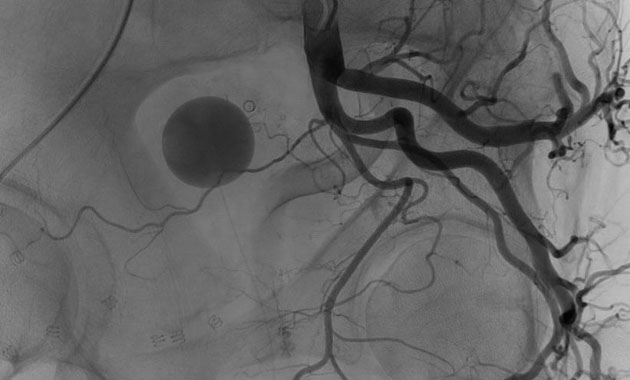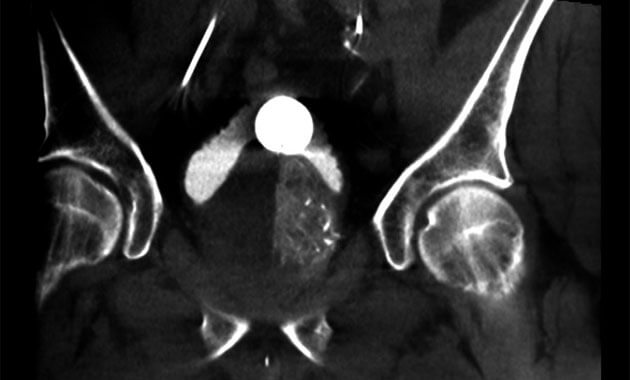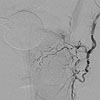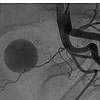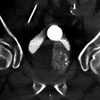Prostate Artery Embolization (PAE): An Alternative to Prostate Surgery
Prostate enlargement, also known as benign prostatic hyperplasia (BPH), is a common condition in older men that causes symptoms such as poor urinary flow, frequent urination during the day and night, incomplete bladder emptying, and sudden urge to urinate. This disease may be treated with oral medications, but not all patients have relief of their symptoms with medications alone. In patients with severe symptoms, a urologist may recommend a surgical procedure, such as transurethral resection of the prostate (TURP).
What is Prostate Artery Embolization (PAE)?
Prostate artery embolization (PAE) is a minimally invasive alternative to surgical procedures like TURP. PAE shrinks the prostate by treating its blood vessels. It is performed by an interventional radiologist through a small incision in the upper thigh.
How is PAE performed?
Dr. Ryan Kohlbrenner and his team use specialized techniques to perform prostate artery embolization (PAE), a procedure being increasingly used in the United States to treat prostate gland enlargement and its associated urinary symptoms. Through a small incision in the upper thigh, access to the prostate's blood vessels is gained, and small particles are injected to slow the blood flow to the gland. In the weeks and months following PAE, the prostate relaxes and shrinks, resulting in symptom relief for most men. Although conventional prostate surgery can be associated with complications like impotence and incontinence, PAE is a minimally-invasive alternative that is not known to cause these issues. We are happy to now offer this procedure to UCSF patients.
Benefits of PAE
- Minimally invasive
- No tissue removed
- Shorter recovery
- Not performed through the urethra
Clinical Indications
PAE may be an option for patients who have severe symptoms from BPH and:
- Are eligible for TURP or similar procedure but prefer a minimally invasive option.
- Have prostate enlargement too great for surgery.
- Have had previous surgery without improvement in symptoms.

